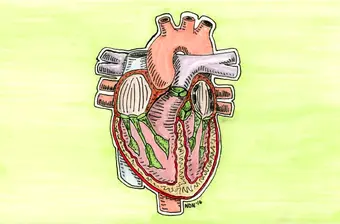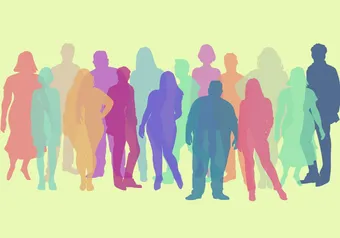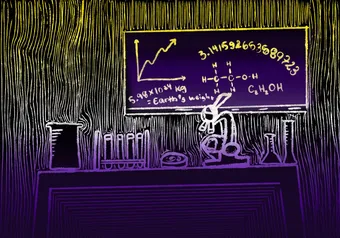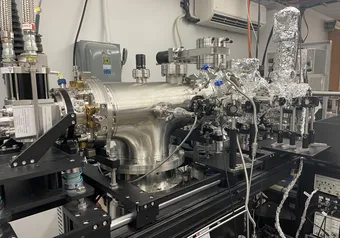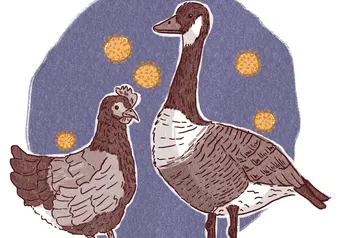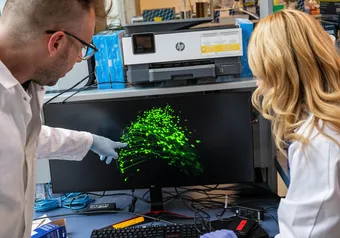“I believe that we can cover the whole area of cardiovascular reconstructive surgery,” said Hadi Mohammadi, biomedical engineer at UBC Okanagan.
Along with his research partner, Guy Fradet — an associate professor of surgery — together with a team of UBCO engineers and Kelowna General Hospital surgeons, Mohammadi has developed synthetic tissue simulation models designed to give surgeons-in-training a more realistic experience when practicing particular surgical procedures. These devices can model individual parts of the heart to stand in for the real thing when surgeons are practicing.
The team’s research goes back over 15 years with Mohammadi’s master’s and doctorate degrees which both focused on prosthetic and synthetic heart valves. The team aims to apply their research to replace cadavers and animal organs for training and practice.
The team has designed affordable synthetic training models to “basically simulate the related surgical procedures,” said Mohammadi. Because they are fabricated, they are more readily available in greater quantities than the human cadavers and animal tissues currently in use.
The advantages of synthetic tissues over those from animals or cadavers are not only economical, but practical for the surgeons. Mohammadi notes that cadaver and animal tissues are not only in short supply, but do not accurately simulate the mechanical properties of a diseased, living human heart. This inaccuracy is exacerbated by the preservation methods that are necessary when working with dead tissue and by the sanitation procedures required to keep surgeons safe as they handle them.
“The good thing about the synthetic model is that it's not contaminated — it doesn't have any problems. It's basically the very same [as real diseased tissue] — very cheap. If you want to practice 10,000 times, you can actually do that with no problem,” said Mohammadi.
#UBC engineer invents synthetic heart tissue that replaces human cadavers for training: https://t.co/m8mirPb8Ne pic.twitter.com/1rHSMBGvgU
— UBC Public Affairs (@ubcnews) September 2, 2016
At the moment, Mohammadi and his team are not concerned about pushing a product out to market, rather they are focused on fine-tuning the model and making it as accurate as possible.
“The manufacturing time is a little bit high, we are working on that. But right now, the only objective we have is the best quality ever. After that, we'd be concerned about the cost and time, but not in this phase.”
That quality is reflected in the physical and mechanical properties of the models. Diseased tissue and living tissue don’t move in the same way that healthy dead tissue does. So a synthetic simulation of living, diseased tissue will be far more accurate than a dead cadaver or animal can be.
Human cadavers or animal tissues don’t have the diseases of the hearts they are standing in for when surgeons practice.
“But here with synthetic models, we actually develop that diseased valves that simulates exactly the same basic structure that the diseased valve has [in humans] and then all the surgical skills that apply to that particular surgery can be applied to this synthetic model,” said Mohammadi.
And the possibilities are not limited to any particular disease. The team’s research has led them to consider many different candidate materials to fabricate their synthetic tissue from. The result of their research gives them both adaptability and accuracy, allowing the simulation of many different kinds of diseased tissues.
“We know basically how to customize the mechanical properties of this material exactly the way we want it to be. This is basically our technology,” said Mohammadi.
[Sorry, video not found. You can contact webmaster@ubyssey.ca to fix the issue]
Mohammadi’s eventual goals with this synthetic tissue technology have not yet been fully realized. His next project will be to use these advanced materials to develop what he calls the next generation of prosthetic heart valves.
He has received funding from the Natural Sciences and Engineering Research Council of Canada which will be used to apply this technology to developing synthetic implantable valves. The development of such a device would mean a reduction in the amount of patients who would need open heart surgery, as the technology would allow the device to be implemented without it.
“These valves can be placed into a very small space and can be angled into a particular or intended destination using a catheter,” said Mohammadi.
The team is looking towards the future when their synthetic tissue models are well-established. Mohammadi sees the synthetic models as a necessity to future medical students. With lower costs and greater availability than the current animal and cadaver models in use, the models are already seeing use at Kelowna General Hospital by some of Mohammadi’s colleagues. Someday, this technology may be commonplace with students in cardiovascular surgery institutions at UBC and around the world.
“Usually, they have to watch an experienced surgeon and they just watch,” said Mohammadi, “But the thing is that [by] using this model, they can have, for example, ten models each and they can apply the skills needed for that particular surgery, and they can build up expertise on that particular surgery.”
First online
Share this article


